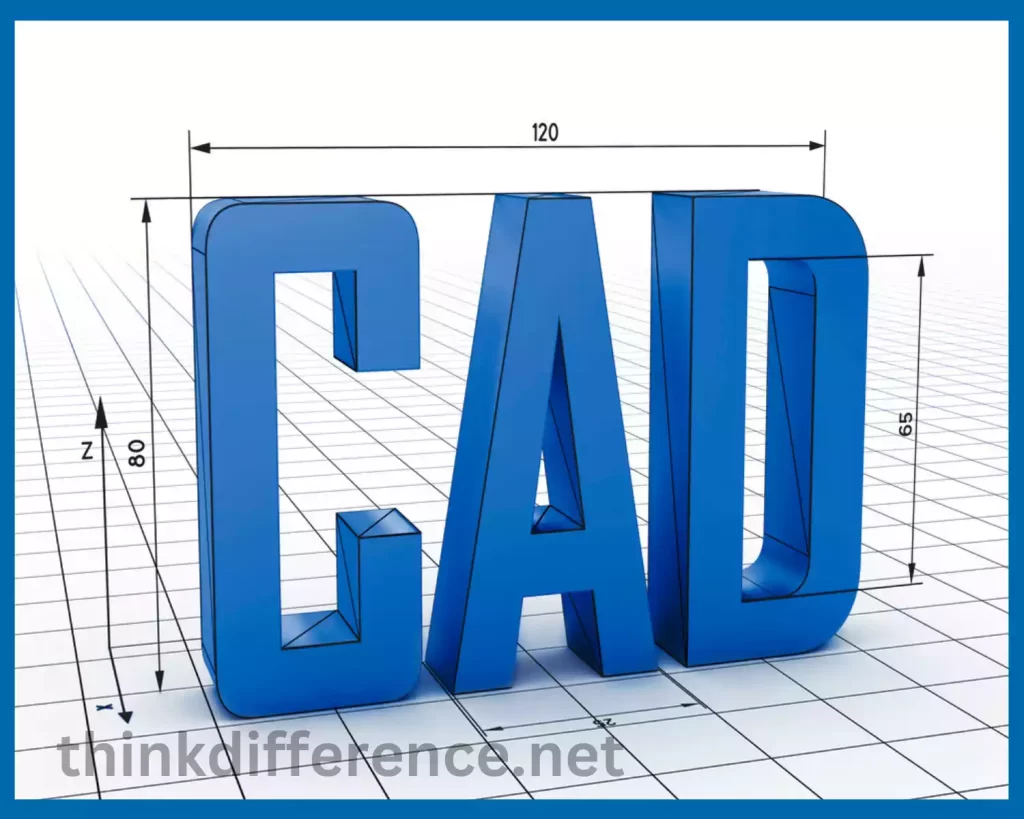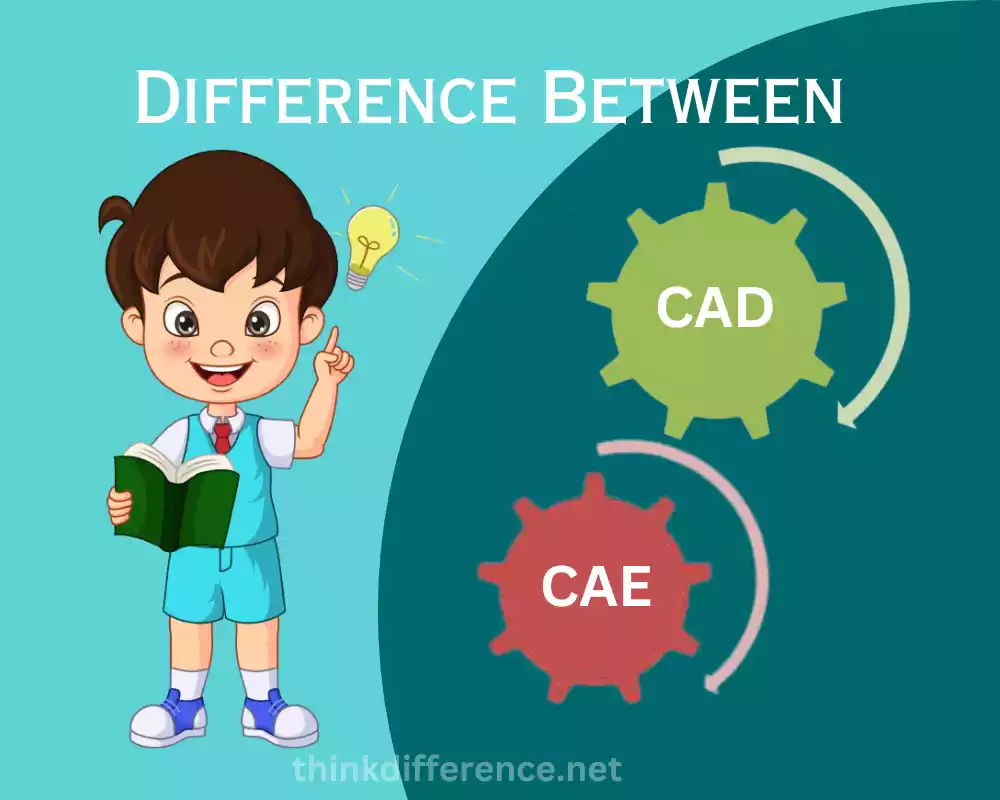Definition of CAD and CAE
Computer-aided Design (CAD) refers to using software programs to efficiently design products, buildings, and other physical items quickly. Engineers and designers alike can utilize CAD programs to quickly generate 2D or 3-D models while making upgrades or modifications quickly and effortlessly.
Computer-Aided Engineering (CAE) refers to the practice of employing computer software to assess, simulate and evaluate a design’s performance – this may involve testing its strength, durability, and other properties or identifying possible problems or areas for improvement – before optimizing it with respect to safety, regulatory or any other relevant considerations.
Importance of CAD and CAE in the engineering field
Both CAD and CAE technologies have become invaluable tools in engineering for various reasons.
- Increased Efficiency: CAD/CAE software enables engineers and designers to work more quickly and efficiently by automating certain aspects of design, thus decreasing the time needed for the creation, analysis, and modification of designs.
- Improved Accuracy: Engineers and designers can achieve greater accuracy and precision using software for creating and analyzing designs, which reduces errors while improving product quality.
- Enhance Collaboration: CAD/CAE software makes collaboration between design teams easier by giving them real-time file-sharing capabilities to work collaboratively on designs in real-time, improving communication between members of teams as well as guaranteeing they all stay on the same page.
- Cost Savings: Engineers and designers who use CAD and CAE can use it to quickly identify issues before finalizing a design and make necessary modifications before it goes to manufacturing, thus decreasing costly rework during this process.
- Innovation: CAD/CAE can facilitate creativity as engineers and designers use it to quickly test and evaluate ideas quickly, leading to products which better fulfill business and consumer requirements.
CAD (Computer-Aided Design)
Computer-Aided Design technology (CAD) enables designers and engineers to use computers for product, building, or physical object design using 2D and 3D modeling software which generates models they can view or change live in real-time.

CAD software typically contains features and tools such as drawing tools, dimensioning functions and constraint solvers that help designers craft precise designs with accuracy and efficiency. Simulation and analysis features may enable designers to test out and evaluate their designs further.
CAD software can be found across industries including manufacturing, architecture and construction. Engineers and designers often employ it in order to quickly create, modify and test designs quickly.
CAD software offers many benefits, such as increased efficiency, accuracy, collaboration and cost savings. Its use helps minimize time, effort, errors involved with designing.
CAE (Computer-Aided Engineering)
Computer-Aided Engineering (CAE) software enables engineers and designers to examine designs, simulate them and compare results in order to compare strength, durability, properties as well as identify any problems or areas for improvement in designs. Software like CAE can assist them in doing all this quickly.

CAE software possesses various tools and features, including computational fluid dynamics (CFD), finite element analysis and multi-body dynamics simulation, to allow engineers to simulate designs under an array of environmental conditions. CAE software helps optimize designs while meeting safety and regulatory standards.
CAE software has found widespread application across various fields such as automotive engineering, aerospace design and mechanical design. Engineers use CAE to virtualise designs they intend on building before actually realising them physically.
CAE software can offer many benefits to companies and their teams alike, including increased efficiency, accuracy, collaboration and cost-cutting measures. CAE helps minimize errors, enhance final product quality and shorten time and effort required to test and evaluate designs; it reduces time and cost associated with physical testing of designs.
Differences between CAD and CAE
There are key distinctions between CAE and CAD:
- Purpose and Function: CAE software provides simulation and analysis of designs while CAD serves to create or alter them.
- Tools and Techniques Used: CAD software typically contains modeling and drawing tools, while CAE software includes simulation and analysis features like finite element analysis (FEA) or computational fluid dynamics simulation.
- Scope of Application: CAD software can be utilized early on for creating 2D and 3-D models; CAE software then becomes essential in testing and assessing designs’ performances.
- Output and Results: CAD software typically generates models or drawings of designs created, while CAE generates analysis results used to optimize them.
- Skills required: CAD is used by designers, engineers and architects who prioritize aesthetics and function while CAE caters more towards analysis and optimization.
CAD and CAE work hand in hand to develop, optimize, and test designs. CAE’s main function lies in testing designs while CAD’s primary function lies in creating and altering designs – while both methods focus on different areas.
When to use CAD vs CAE
Both CAD and CAE are indispensable tools for engineers, but can be utilized at different points and for different goals.

CAD tools can be utilized early in the design stage to generate and edit two-dimensional and three-dimensional models. Giving designers an early glimpse of what their final product might look like before construction begins. CAD applications span multiple fields including product design, architecture and any field where aesthetics and functionality play key roles in decision-making processes.
CAE stands for computer aided engineering (CAE). CAE can be used for simulating and assessing the performance of designs created with computer assisted design (CAD). CAE allows engineers in areas like aerospace, automotive and mechanical engineering to evaluate designs under multiple environmental conditions to detect any possible flaws that arise; CAE analysis is widely employed here.
CAE is used for testing and evaluating designs. Both CAD and FEA play an integral part in the design process and help designers to conceptualize, test, optimize and validate designs.
Conclusion
CAD and CAE as essential tools, but each has different purposes in the design process. While CAD enables engineers to create 2D and 3-D models, CAE simulates performance analysis for them.
CAD and CAE each present unique benefits for engineers and designers, including increased efficiency, accuracy, collaboration and cost savings. Engineers and designers can save both time and money using these programs when creating, modifying or revising designs with them; errors will also be reduced greatly and product quality improved significantly. CAD/CAE software has revolutionized how engineers and designers approach design. Now they are more adept at producing more efficient designs.



